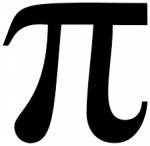Jerramundi
Senior Member
- Location
- Chicago
- Occupation
- Licensed Residential Electrician
@Carultch is correct. To put it simply, you're inserting an extra R in your V*V/R*RBecause you would be inserting an extra 1/R in the equation that wasn't there in the first place.
When we first learned about the Distributive Property way back when, we used to draw arrows to help it make sense, like this:
The B and C here are two different values, both "receive" the A.
I think the reason you're getting confused is because the ( V / R ) is spaced out horizontally, because you have to do it that way when typing, and it looks similar to the B + C.
You have to think of the ( V / R ) as ONE number, A FRACTION. So when you distribute the V it actually looks like this:


When you multiple by a fraction ( V / R ), you have to convert the whole number ( V ) to a fraction too... because those are simply the rules of multiplying fractions. You multiply the top two numbers (i.e. numerators) and the bottom two numbers (i.e. denominators) separately.
Any number divided by 1 is equal to itself.





